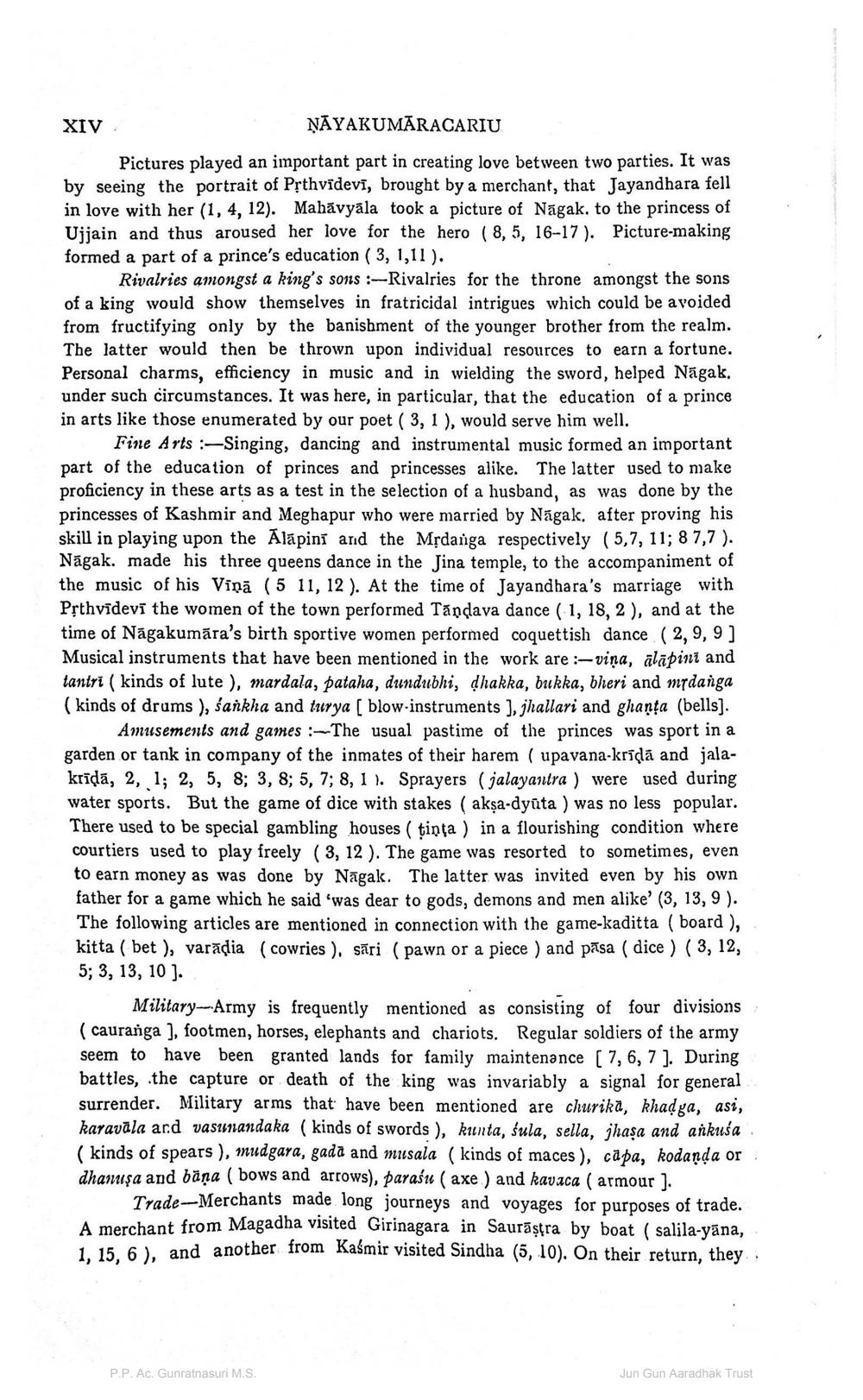________________ XIV. NAYAKUMARACARIU Pictures played an important part in creating love between two parties. It was by seeing the portrait of Prthvidevi, brought by a merchant, that Jayandhara fell in love with her (1, 4, 12). Mahavyala took a picture of Nagak, to the princess of Ujjain and thus aroused her love for the hero ( 8,5, 16-17). Picture-making formed a part of a prince's education (3, 1,11 ). Rivalries amongst a king's sons :-Rivalries for the throne amongst the sons of a king would show themselves in fratricidal intrigues which could be avoided from fructifying only by the banishment of the younger brother from the realm. The latter would then be thrown upon individual resources to earn a fortune. Personal charms, efficiency in music and in wielding the sword, helped Nagak. under such circumstances. It was here, in particular, that the education of a prince in arts like those enumerated by our poet (3, 1), would serve him well. Fine Arts :-Singing, dancing and instrumental music formed an important part of the education of princes and princesses alike. The latter used to make proficiency in these arts as a test in the selection of a husband, as was done by the princesses of Kashmir and Meghapur who were married by Nagak. after proving his skill in playing upon the Alapins and the Mtdarga respectively (5,7,11; 87,7). Nagak. made his three queens dance in the Jina temple, to the accompaniment of the music of his Vina (5 11, 12). At the time of Jayandhara's marriage with Psthvidevi the women of the town performed Tandava dance ( 1, 18, 2 ), and at the time of Nagakumara's birth sportive women performed coquettish dance (2, 9, 9 ] Musical instruments that have been mentioned in the work are :- vina, alapini and tantri ( kinds of lute), mardala, pataha, dundubhi, dhakka, bukka, bheri and mpdanga ( kinds of drums ), sankha and turya ( blow-instruments ), jhallari and ghanta (bells). Amusements and games :--The usual pastime of the princes was sport in a garden or tank in company of the inmates of their harem ( upavana-krida and jalakrida, 2, 1; 2, 5, 8; 3, 8; 5, 7; 8, 1). Sprayers (jalayantra ) were used during water sports. But the game of dice with stakes ( aksa-dyuta ) was no less popular. There used to be special gambling houses ( tinta) in a flourishing condition where courtiers used to play freely (3, 12 ). The game was resorted to sometimes, even to earn money as was done by Nagak. The latter was invited even by his own father for a game which he said 'was dear to gods, demons and men alike' (3, 13, 9). The following articles are mentioned in connection with the game-kaditta (board ), kitta ( bet ), varadia (cowries ). sari (pawn or a piece ) and pasa ( dice ) (3, 12, 5; 3, 13, 10). Military-Army is frequently mentioned as consisting of four divisions ( cauranga ), footmen, horses, elephants and chariots. Regular soldiers of the army seem to have been granted lands for family maintenance [ 7, 6, 7). During battles, the capture or death of the king was invariably a signal for general surrender. Military arms that have been mentioned are churika, khadga, asi, karavala ard vasunandaka ( kinds of swords ), kunta, sula, sella, jhasa and ankusa ( kinds of spears ), mudgara, gada and musala ( kinds of maces), capa, kodanda or dhanusa and bara ( bows and arrows), parasu ( axe ) and kavaca ( armour ]. Trade--Merchants made long journeys and voyages for purposes of trade. ant from Magadha visited Girinagara in Saurasyra by boat (salila-yana, aanother from Kasmir visited Sindha (5, 10). On their return, they P.P.Ac. Gunratnasuri M.S. Jun Gun Aaradhak Trust




